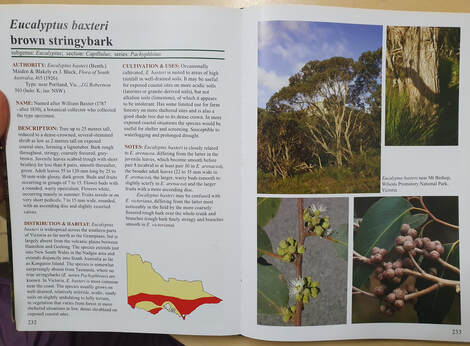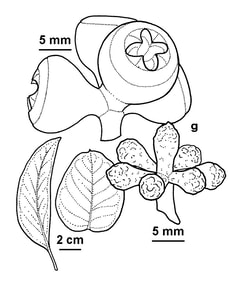|
I’ve attached the bird list that I made during the visit. Thirty-three species in total for the day which is a good day’s birding. There was some discussion about orchid ID – the following is very useful and about as up-to-date as you will get – Bush Gems: a guide to the wild orchids of Victoria https://bushorchids.weebly.com/bush-gems-orchids-of-victoria.html It is available as an eBook on CD-rom which I have loaded to my laptop and phone. There are also some new plant ID tools becoming available which use Lucid technology. Very powerful and fairly intuitive to use. Unlike traditional plant keys you can usually identify things with incomplete information e.g. seed characteristics when you don’t have seeds available. At the moment these are only available for some of the larger plant families. You need to be online to use them. The Pea Key - https://www.anbg.gov.au/cpbr/cd-keys/peakey/key/The%20Pea%20Key/Media/Html/index.html Wattle – Acacias of Australia - https://apps.lucidcentral.org/wattle/text/intro/index.html Euclid - Eucalypts of Australia - https://apps.lucidcentral.org/euclid/text/intro/index.html Asteraceae of Victoria - https://vicflora.rbg.vic.gov.au/static/keys/asteraceae and click “Go to Key Player” We spent quite a bit of time talking about weeds and, in particular African Weed Orchid. I’ve attached a set of photos that I prepared so that I could show people what to look for. Feel free to print copies to show others. Cheers, Euan
0 Comments
We were also discussing the difference between Brown Stringybark (Eucalyptus baxteri) and Desert Stringybark (Eucalyptus arenacea). There are a few features to identify them, though the bud seems to be the clearest (rough/warty bud cap on Brown Stringy and non-warty on Desert Stringy) - images from RBG attached. The fruit (nut) on Brown Stringy is generally sessile (no stalk), where as the fruit on Desert has a very short pedicel (stalk). Attached are descriptions from Eucalypts of Victoria & Tasmania by D. Nicolle. Flora of Victoria online is a great resource too;
Brown Stringybark: https://vicflora.rbg.vic.gov.au/flora/taxon/f970ddca-8b2c-4160-8368-54d9e0bbfa92 Desert Stringybark: https://vicflora.rbg.vic.gov.au/flora/taxon/bf1845b1-4701-4887-90f0-476035bf9f55 Written by Mirinda Thorpe An identification feature between Sudell's Frog (Neobatrachus sudelli) and Painted Frog/Mallee Spadefoot (Neobatrachus pictus) is that Sudell's has what is referred to as 'baggy pants', which is loose skin from the the groin to the knee (seen when stretching the back legs out), where as the Mallee Spadefoot has taught groin skin.
Written by Mirinda Thorpe Following much discussion and after several iterations our Spring Gathering did actually happen! We spent Saturday October 3rd at Roy and Lynne Pail’s property, “Krurr Rak Conservation Reserve”, near Clear Lake. It was great to be able to get together in person again after the cancellation of our May meeting. Of course our Melbourne members were missed, but we hope to see you next May. The day began with Roy sharing some of his vast knowledge about reptiles and giving us a close up look at a variety of frogs, skinks, geckos and lizards found on his property. For some the highlight of Roy’s presentation was getting close to a couple of his captive bred animals, namely a Tasmanian Tiger snake and a Stimson’s Python (or Large Blotched Python – native to north WA). (Others were a bit more wary!) We spent several hours wandering through the bush, observing / photographing / learning about plants and all creatures great and small. Roy has a particular interest in animals and uses game cameras to find out what lives where. We also heard something of the history of the 335acre property, which was used for grazing up until the early 2000s. Iestyn was involved in the direct seeding of 2 ha and planting of 30,000 speedlings (small cells) in 2003. He gave us insights into what he has learned by watching the property since then, including: bulokes regenerating from lignotubers, which had been grazed down for decades; species such as Callitris germinating up to 16 years after sewing; how much seed is needed for such a project etc. A discussion about why we all do what we do, looking after our properties for conservation proved to be relevant for many. It was good to hear what motivates different people, as well as some of the frustrations we face. For those who could stay, a night walk followed an enjoyable meal around the campfire. Thermal scopes proved useful at finding cold things – frogs, who knew rain was imminent! Let’s hope that by spring 2021 it will be legal to camp on private property without having to be in the household bubble of the owners! |
AuthorThis page is to record conversations held within the group that would be useful for sharing information. ArchivesCategories
All
|





 RSS Feed
RSS Feed